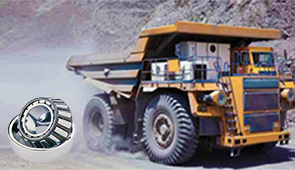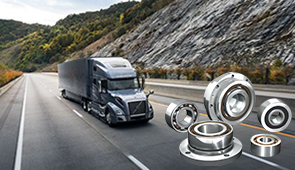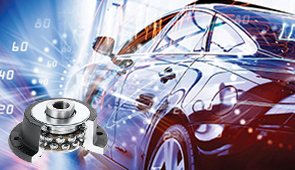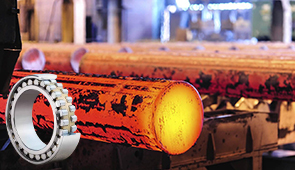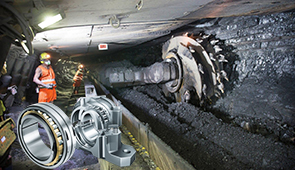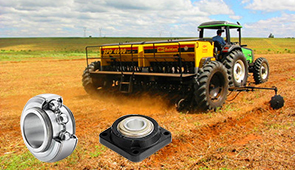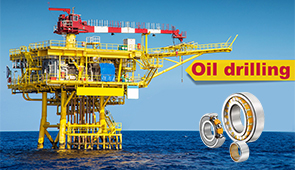Unlocking the Power of Ball Bearings: Essential Examples and Applications
Ball bearings are a fundamental component in a wide range of mechanical systems, offering critical support to enable smooth motion, reduce friction, and enhance efficiency. Their versatile design and functionality make them indispensable in numerous industries, including automotive, aerospace, industrial machinery, and even consumer electronics. This article explores both the fundamental principles of ball bearing operation and their diverse applications, underlining their pivotal role in modern engineering. By examining key examples and practical implementations, we aim to provide readers with a detailed understanding of how ball bearings optimize performance across various systems and why they remain a vital asset in engineering and manufacturing processes.
How do ball bearings reduce friction in various applications?

Understanding the inner workings of ball bearings
Ball bearings operate efficiently by replacing sliding friction with rolling friction while being in contact with two rotating surfaces. The two surfaces which are referred to as inner race and outer race, revolve separately. These surfaces slide against a set of ball elements which further lessens friction. Critical characteristics justifying performance consist of the following:
- Friction Coefficient: Ball bearings coefficients more than 5 times lower than sliding surfaces are possible. Friction is achieved as low as 0.001 up to 0.005.
- Load Ratings: Bearings have defined dynamic and static load ratings that guarantee the bearing can perform and will not fail while forces are being prolonged.
- Material Hardness: When AISI 52100 is selected for axle material used in bearings will provide high completes which sustains over 60 HRC of Rockwell hardness.
- Precision Classes: These classes are for a given purpose set for distinct populations of parts accuracy using such standards as ISO or ABEC.
These factors will prolong the efficiency and minimize the cost of servicing ball bearings for systems within the automotive industry or for general industrial machinery.
Comparing ball bearings to other bearing types
When looking at other types of bearings, such as roller bearings, it is clear that ball bearings, depending on their application, have distinct benefits and drawbacks. One of the main advantages is how proficiently they deal with radial and axial loads which allows for general purposes. Their load-carrying abilities, however, are not optimal when compared to roller bearings, which excel under radial loads, because roller bearings have line contact, unlike point contact in ball bearings.
- Load Capacity: Even though ball bearings can take on moderate loads which is several kN, the contact areas will always be spacious surpassing those of roller bearings.
- Speed Ratings: Unlike roller bearings, which give up on speed for an enhanced load capacity, ball bearings are frequently used for high RPM rotations and can easily achieve speeds of over 20,000 RPM depending on lubricants and design.
- Friction Coefficients: The energy efficiency in ball bearings is superb with minimal friction ranging from 0.001-0.005, however, like roller bearings, they are less stable for heavy or shock loads.
- Misalignment Tolerance: Unlike cylindrical roller bearings, which are typically less forgiving to misalignment, self-aligning ball bearings can tolerate minor misalignments.
The choice for ball bearings as opposed to any other type is dictated mostly from an operational viewpoint because of the application speed, load, and accuracy needs. Their compact design and capability for high speed make them suitable for use in electric motors, turbines, and precision instruments. However, more demanding systems may require other types of bearings.
What are some unique ball-bearing examples in industrial machinery?
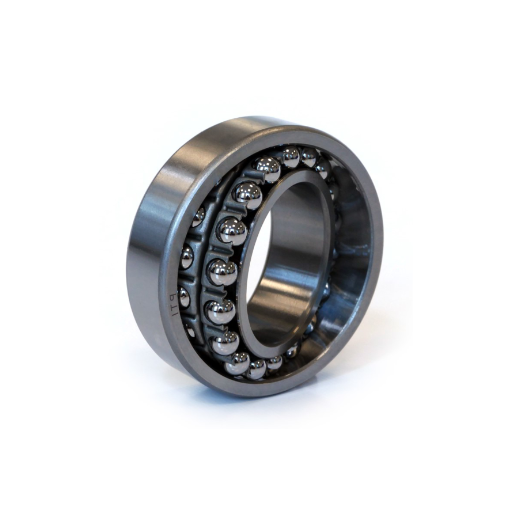
High-speed spindles in CNC machines
Ball bearings are critical components for spindles on CNC machines since they allow machines to work at supersonic speeds. Let me explain further. These spindles use bearings that allow for rotation more than 20,000 RPM while keeping friction and temperatures in check. And because speed cutting and precision milling are critical in the operation of CNC machines, ball bearings outperform due to their low friction coefficient, which makes them suitable for high speeds.
- Rotational Speed: Depending on the specific application, ball bearings in CNC spindles can handle RPM from 10,000 to over 100,000.
- Load Capacity: Although they achieve high speed, these ball bearings are specially designed to withstand the radial and axial loads that are generally present during machining.
- Lubrication Requirement: To reduce overheating and general wear and tear, an effective lubrication system, for instance, oil air, or grease, is a must in high-speed operations.
- Material Composition: Under extremely demanding conditions set forth by high-speed CNC, high-precision steel or ceramic materials outperform due to their inconceivable strength combined with thermal stability.
These are carefully engineered to ensure reliability and efficiency in high-speed CNC machining applications.
Heavy-duty ball bearings in construction equipment
In regards to the particular usage of the ball bearings in construction equipment, I take into account thier specific load capacities, their material composition, the tools or devices that seal the grease within the ball bearings, the temperature range within which the ball bearings are expected to operate, and the lubrication method used to maintain the ball bearings.
- Load Capacity: As regards the load capacity, the bearings must also take care of both radial and axial loads, with dynamic load ratings typically ranging between somewhere between 100 kN to 500 kN. Depending on the application, these numbers can exceed more than a few hundred.
- Material Composition: For material composition, the common choice is composed of carbon chrome steel that has been heat treated, or composite materials that have been constructed with advanced technology, as it provides unrestricted durability and takes resistance to wear to the next level.
- Sealing Mechanism: To prevent contamination and the leakage of grease during extended operation, the sealing has a rather effective sealing system such as triple lip or labyrinth seals, which are essential in most cases.
- Operating Temperature: Usually, they are expected to operate efficiently between -20 deg. C and 150 deg. C; however, these figures can exceed get even harsher when subjected to extreme conditions. Specialized bearings can endure even higher temperatures.
- Lubrication: Using heavy-duty ball bearings makes performance maintenance a walk in the park due to their advanced grease/oil lubrication. These bearings perform best under severe working conditions, where low friction is a necessity.
Heavy-duty ball bearings offer precise support and ensure dependable function under even the toughest operating conditions of construction machinery. Their design formulation is comprised of a certain level of durability and flexibility to counter a specially defined problem.
Precision bearings in robotic arms
Precision bearings are critical components in robotic arms to ensure accurate motion control and repeatability. I believe their primary function is to support high-speed, high-precision movements with minimal friction. These bearings are engineered to handle both radial and axial loads, enabling smooth rotation and reducing mechanical backlash.
- Rotational accuracy: Constant with ISO P4 or ABEC-7 tolerances with micrometer range.
- Load capacity: Defined by the usage. For instance, robotic elbow joints have bearings with the ability to restrain light axial forces along with high radial moments.
- Friction Coefficient: It must be below 0.001 to ensure energy efficacy, which is usually not a problem during a robotic arm’s operations.
- Material composition: Great stiffness and modulus of elasticity along with wear-resistant properties are exerted by stainless steel high-grade matrices and ceramic hybrids.
- Lubrication: For robotic arms, the use of high-grade synthetic grease is optimal for controlled settings.
Paying attention more to these features makes sure the robotic arm bearings are durable, precise, and dependable under extreme conditions, all thanks to precision bearings.
How are ball bearings used in automotive applications?
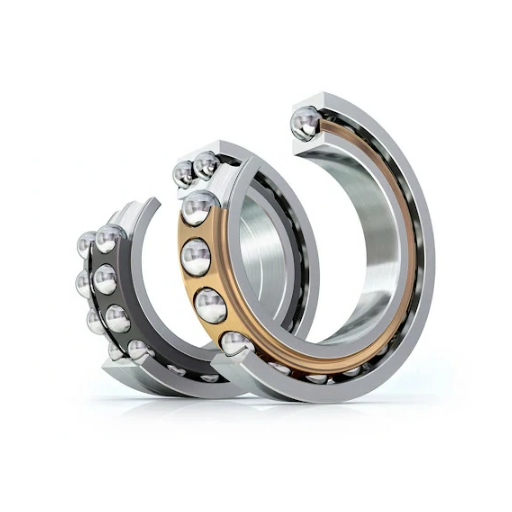
Wheel bearings: Ensuring smooth rotation
The smooth and efficient wheel rotation is facilitated by the highly sophisticated wheel bearings which are crucial in automotive applications. In simpler terms, wheel bearings enable the vehicle to move at a low point of friction while toting the load of the vehicle. To cater to the aspects mentioned above, some specific technical requirements need to be satisfied:
- Load Capacity: The wheel bearings contain the static and dynamic component loads from the vehicle’s weight and other forces that stem from accelerating, braking, or cornering. This guarantees strength and dependability in a variety of conditions.
- Material Strength: Some high-end steel or even ceramic materials are employed to improve the wear tolerance, the load height in the working condition, and even deformation over a long span.
- Seal Design: Effective sealing is critical to block contaminants such as dirt, moisture, or debris from interfering with bearing functionality, thereby improving operational life.
- Lubrication: Optimal lubrication has a direct impact on friction, heat, wear, and longevity, therefore allowing the machine to operate at its full potential. Synthetic lubricants, known for their stability and thermal looseness, are often employed for such tasks.
- Precision Tolerance: To ensure performance concerning an axle and hub assembly, bearings must be machined within extremely tight tolerances to enable smooth rotation without free play.
Considering these factors, the wheel bearings can induce and maintain rotation of the wheel efficiently without compromising on safety and performance for any automotive needs.
Transmission bearings: Managing high loads and speeds
Transmission bearings are designed to absorb considerable radial and axial loadings while rotating at high speeds. This feature is critical in maintaining the performance and efficiency of automotive transmissions. The materials used for making these bearings must be strong enough to withstand thermal degradation, and they should have a specific shape to decrease wear and thermal friction. For instance:
- Load Capacity: Bearings can support a certain range of dynamic and static loads using high-carbon chromium steel for enhanced durability.
- Speed Ratings: Transmission bearings must endure high RPM conditions; oil types and surface finishing procedures are used to reduce frictional losses at higher speeds.
- Thermal Management: Heat management is done through the use of specialized lubrication features and materials with high thermal conductivities to avoid overheating during high-power operations.
- Dimensional Accuracy: The use of tight tolerances ensures alignment with shafts and gears to minimize vibration and noise and enable smooth operation under loading conditions.
Through the application of these criteria, transmission bearings sustain their integrity during operation in the harsh conditions presented by the automotive industry.
Engine bearings: Withstanding extreme conditions
Due to the extreme operational specifics of engine bearings such as high temperature, heavy load, and friction, these components are built with advanced materials that enhance the functional life of core engine components.
- Load Carrying Capacity: Engine bearings that are manufactured to endure high combustion dynamic forces demand thorough consideration. These are achieved with the employment of high-strength alloys unlike those used in leaded aluminum or copper materials which offer low fatigue resistance.
- Thermal Resistance: Bimetal or tri-metal bearings demonstrate the capacity to resist deformation induced through the extremely high heat generated during engine operation.
- Friction and Wear Reduction: In conditions where mixed boundary lubrication occurs, low friction coatings like softer polymers, or even graphite are to reduce the friction and the wear to the underlying body.
- Oil Clearance Optimization: Tighter tolerances for inline oil clearance cross sections promote the proper hydrodynamic lubrication to occur with a thin oil layer capable of absorbing stresses without any chance of direct contact.
- Corrosion Resistance: Engine oil additives and combustion residues tend to have harsh chemical reactions. Therefore anti-corrosive features have been integrated within the bearing materials to safeguard against these substances.
Withstand fierce mechanical stress, engine bearings are capable of maintaining within set perimeters whilst functioning. This guarantees optimal performance and dependability of contemporary internal combustion engines.
What are the advantages of ceramic and hybrid ball bearings?
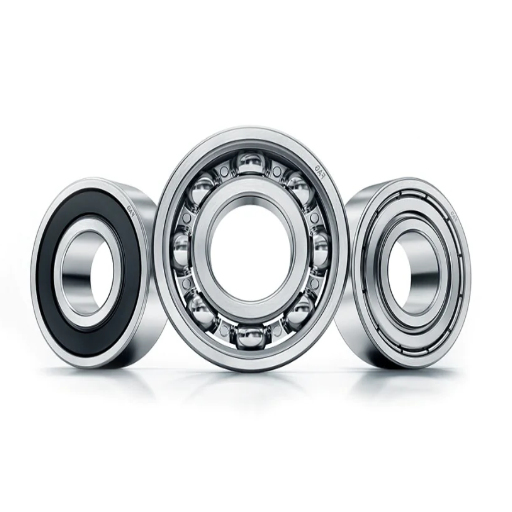
Exploring the benefits of ceramic ball bearings
Ceramic ball bearings are superior to classic steel bearings because of their particular material properties. To start with, ceramic balls are much lighter than their steel counterpart, which reduces the overall rotating mass thus enhancing the efficiency while reducing the frictional losses. In addition, they possess higher hardness, which lowers deformation and increases their lifespan when placed under heavy loads. The materials are also highly resistant to thermal expansion as well as ultra-high temperatures over 1200 °F. This makes them useable in high-speed and high-temperature settings.
Technically, ceramic ball bearings’ coefficient of friction is much lower than that of steel and ranges between 0.20 – 0.30. This leads to much lower energy and heat loss during motion. Additionally, their density is nearly 40% less than steel which encourages reduced weight and improved rotational capability. In addition, because ceramics do not corrode, these bearings can work optimally in chemically aggressive or moist conditions without getting damaged.
At the same time, incorporating ceramic balls into hybrid ball bearings which have steel races retains the same benefits while adding to the strength of steel and the ease provided by ceramic rolling elements. Due to these features, ceramic and hybrid ball bearings are essential for the most extreme conditions where precision, durability, and high performance are necessary.
Hybrid ball bearings: Combining metal and ceramic
Combining the thermal and strength properties of metals with polymers is used in Hybrid bearings. They are used in high-tech industries due to their unique features. The ceramic rolling components are usually constructed with Silicon Nitride (Si3N4) which has excellent properties including low density and strength. This minimizes the inertia that must be overcome when controlling the rotation of the motor, which allows it to be driven faster and more smoothly. In addition, the production of energy by the motor that is not useful is increased due to the low friction coefficient of the ceramic balls, which operate more efficiently under heat.
- Comparative Weight of Components: Compared to other materials like steel, Silicon Nitride has a 60% lower weight. This is greatly beneficial as it brings the overall weight of the bearing down.
- Resistance: Unlike steel, ceramic balls have a resistance of up to 1500 HV, putting them at an advantage over other materials as they are prone to less wear and tear.
- Heat: Anything deemed a high temperature is responsive to equivalent ceramic levels allowing for adequate performance when required.
- Power: There is energy reduction observed due to equivalent ceramic levels providing a friction coefficient at around 0.001 as long as the required lubrication is present.
Such elements warrant the application of hybrid ball bearings in the aerospace and automotive industries as well as the precision machine tools industry where performance and reliability under severe conditions exercises are critical.
How are ball bearings utilized in aerospace engineering?
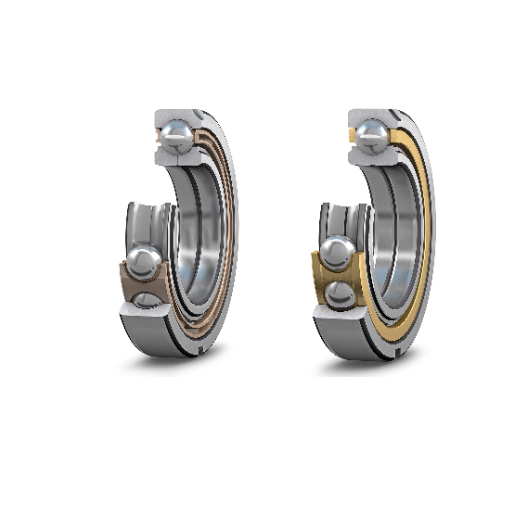
Jet engine bearings: Handling extreme temperatures
A jet engine’s bearings are expected to revolve under extreme temperatures and high speeds. To solve this problem, I would stress the importance of hybrid ceramic ball bearings that have a steel raceway. These high-precision bearings are designed to resist high thermal stresses and high structural loads.
- Material characteristics: Inert ceramic balls function normally even in extremely high temperatures exceeding 1200F (649C).
- Thermal expansion: A lower coefficient of thermal expansion of ceramics minimizes the chances of deformation which increases operational accuracy.
- Load capacity: These advanced hybrid ceramic ball bearings perform excellently under combined axial and radial loads which in return increases the overall performance of the jet engine.
- Friction coefficient: Under severe constrain, proper lubrication reduces the frictional co-efficient to approximately 0.001.
Jet engine bearings are designed using advanced materials so that can survive harsh environments and still be efficient and durable for use in aerospace engineering.
Landing gear bearings: Supporting heavy loads
The landing gear bearings can manage the utmost loads and stresses during the ‘landing’ and ‘taxiing’ phases of the airplane. These elements are capable of sustaining high axial and radial loads while still exhibiting structural and operational soundness.
- Load Endurance: Having been built to endure 500,000 lbs of over static weight (226,796 kg) in addition to the dynamic weight of 3,000 lbs per in² (206.8 bar) ensures the bearing’s functionality is never compromised even under extreme mechanical stress.
- Material Composition: Often made from steel alloys with a high tensile strength, commonly SAE 52100 or M50, these materials are capable of withstanding high loads, and resisting corrosion and fatigue.
- Lubrication Requirements: Enhanced methods of lubrication allow for a reduction in friction and wear, achieving an astonishing 0.005 coefficient of friction which in turn increases the life span of the bearing.
- Temperature Tolerance: The bearings operate efficiently at temperatures as low as -60°F and as high as 500°F (-51°C to 260°C), thus being able to satisfy the necessary thermal conditions of aircraft operations.
Such unique properties ensure that landing gear having met strict engineering requirements remains unwavering and resilient while constantly bearing significant mechanical issues in the aerospace environment.
Satellite and spacecraft bearings: Operating in zero gravity
Engineering requirements placed on the bearings of satellites and spacecraft are unprecedented because they function in extreme environments that have very little opportunity for maintenance. These devices also work in zero gravity. Such conditions require the bearings to be designed in a specific manner, so they can reliably work in vacuum environments where normal lubrication techniques are unfeasible.
- Material Composition: Space application bearings are always made using specific materials like stainless steel (AISI 440C) or ceramic hybrids. This is because the bearings need to withstand radiation, extremely high/low, thermal stress, and have very low outgassing.
- Lubrication: For space-grade bearings, lubricating elements are never liquid. Instead, they contain solid lubricants such as MoS2 or PTFE that retain low friction, making it unnecessary for liquid lubricants that will evaporate in vacuum conditions.
- Temperature Tolerance: Spacecraft bearings need to be able to function under shadowed and sunlit orbiting phases which can reach temperatures between -250F and 450F.
- Load Capacity: In these bearings, extreme mechanical loads are incurred due to launching rockets, deploying satellites, or using gyroscopes and reaction wheels, which during these scenarios operate in a near-zero gravity environment.
Bearing devices can function with inordinate efficiency under deeply hostile conditions of space exploration, and satellites and spacecraft as well as bearings endure engineering requirements like these by keeping to unmoving standards and employing more advanced technologies.
Frequently Asked Questions (FAQs)
Q: What are the different types of ball bearings?
A: There are several types of ball bearings, including deep groove ball bearings, angular contact ball bearings, self-aligning ball bearings, and thrust ball bearings. Each type is designed for specific applications and load requirements. Deep groove ball bearings are the most commonly used type, suitable for high-speed applications and radial loads. Angular contact bearings are ideal for combined radial and axial loads while self-aligning ball bearings can accommodate misalignment. Thrust ball bearings are specifically designed to handle axial loads.
Q: How do ball bearings differ from roller bearings?
A: Ball bearings and roller bearings are both types of rolling-element bearings, but they differ in their contact geometry. Ball bearings use balls as the rolling elements, while roller bearings use cylindrical, tapered, or spherical rollers. Ball bearings generally offer lower friction and are suitable for higher speeds, while roller bearings can handle heavier loads and provide more even load distribution over a larger contact area.
Q: What are the main components of ball bearings?
A: Ball bearings consist of several key components: the inner and outer races, balls, and a cage or retainer. The inner and outer races are the grooved rings that guide the balls. The balls are the rolling elements that reduce friction between the moving parts. The cage or retainer separates the balls and maintains their proper spacing. Some ball bearings may also include seals or shields to protect against contamination and retain lubricant.
Q: What are the advantages of using ball bearings?
A: Ball bearings offer several advantages, including low friction, high efficiency, and the ability to support both radial and thrust loads. They are ideal for high-speed applications and provide precision movement. Ball bearings also have a long service life when properly maintained and can operate in various environments. Their compact design allows for space-saving solutions in many mechanical systems.
Q: How do self-aligning ball bearings work?
A: Self-aligning ball bearings feature a spherical outer race that allows the bearing to adjust its alignment. This design compensates for misalignment between the shaft and housing, making them suitable for applications where shaft deflection or housing deformation may occur. Self-aligning ball bearings can accommodate angular misalignment up to 2-3 degrees, reducing stress on the bearing and extending its life in challenging operating conditions.
Q: What are some common applications for ball bearings?
A: Ball bearings are used in a wide range of applications across various industries. Some common examples include automotive wheel bearings, electric motors, hard disk drives, industrial machinery, aerospace equipment, and household appliances. They are essential components in any application requiring smooth rotation or linear motion with minimal friction. The specific type of ball bearing used depends on the load requirements, speed, and operating conditions of the application.
Q: How do angular contact ball bearings differ from deep groove ball bearings?
A: Angular contact ball bearings and deep groove ball bearings differ in their internal geometry and load-carrying capabilities. Deep groove ball bearings have deep, uninterrupted raceway grooves and can support primarily radial loads with some axial load capacity. Angular contact ball bearings have raceways that are displaced relative to each other, allowing them to support combined radial and axial loads more effectively. The contact angle in angular contact bearings determines their axial load capacity and stiffness.
Q: What factors should be considered when selecting a ball bearing?
A: When selecting a ball bearing, several factors should be considered, including the type and magnitude of loads (radial, axial, or combined), operating speed, environmental conditions, space constraints, and precision requirements. The shaft and housing dimensions, desired service life, and maintenance requirements also play a role in the selection process. Additionally, considerations such as noise levels, friction characteristics, and the need for seals or lubrication should be taken into account to ensure the bearing is suitable for the specific application.
UCTH213-40J-300 with Setscrew(inch)
CNSORDERNO: Normal-duty(2)
TOGN: UCTH213-40J-300
SDI: B-R1/8
SD: 2 1/2
UCTH212-39J-300 with Setscrew(inch)
CNSORDERNO: Normal-duty(2)
TOGN: UCTH212-39J-300
SDI: B-R1/8
SD: 2 7/16
UCTH212-38J-300 with Setscrew(inch)
CNSORDERNO: Normal-duty(2)
TOGN: UCTH212-38J-300
SDI: B-R1/8
SD: 2 3/8
UCTH212-36J-300 with Setscrew(inch)
CNSORDERNO: Normal-duty(2)
TOGN: UCTH212-36J-300
SDI: B-R1/8
SD: 2 1/4
UCTH211-35J-300 with Setscrew(inch)
CNSORDERNO: Normal-duty(2)
TOGN: UCTH211-35J-300
SDI: B-R1/8
SD: 2 3/16
UCTH211-34J-300 with Setscrew(inch)
CNSORDERNO: Normal-duty(2)
TOGN: UCTH211-34J-300
SDI: B-R1/8
SD: 2 1/8









